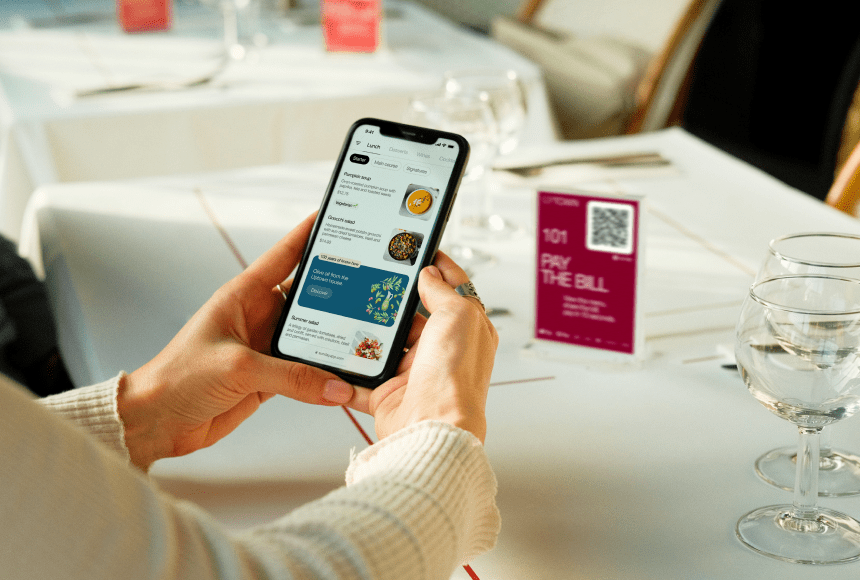
Aligning Your Menu with Today’s Shift to Vegetarian, Local, and Sustainable Options
Why Consumer Tastes Are Changing—and What It Means for Your Restaurant
Over the last few years, you’ve likely heard it all: diners clamoring for more plant-based dishes, a push to source locally grown ingredients, and an urge for restaurants to lighten their carbon footprint. Far from being passing trends, these new demands are reshaping the core of the food industry. According to a recent survey on plant-forward and sustainable dining, almost 40% of American consumers now deliberately seek out vegetarian or eco-friendly items on menus.
The big question is: how do you adapt your offerings without compromising flavor—or your bottom line? For many restaurant owners, it’s about striking a balance. You want to please loyal meat-lovers but also attract the health-conscious, the ethically minded, and those who simply crave variety. Fortunately, weaving vegetarian, local, and sustainable elements into your menu can be done thoughtfully and profitably. In this guide, we’ll walk through the practical steps to realign your dishes with the evolving expectations of modern diners.
1. Start with a Simple Vegetarian Strategy
If you’re new to plant-forward cooking, it’s easy to get overwhelmed by the sheer scope of vegetarian or vegan recipes out there. But you don’t have to reinvent your entire kitchen overnight. Instead, begin with modest but meaningful changes:
- Offer At Least One Plant-Based Entrée per Menu Section: Whether it’s a hearty lentil stew or a grilled cauliflower steak, give diners a compelling vegetarian option for appetizers, mains, and even sides. This ensures you cater to those who avoid animal products—and may encourage curious meat-eaters to explore, too.
- Customize Existing Favorites: You might adapt a signature dish by swapping out meat for a well-seasoned plant protein like tofu, chickpeas, or mushrooms. Keep the core flavors, but remove or replace the animal element. This approach often feels comfortable for guests who know your classics and want a vegetarian spin.
- Invest in Flavor-Forward Ingredients: Emphasize bold spices, herbs, and high-quality produce. Great seasoning can make even the most skeptical diner forget about meat for one meal, simply because the dish is that tasty.
Launching plant-based items doesn’t mean alienating your carnivorous crowd. It just means you’re catering to a growing segment—one that often brings friends and family along for the ride.
2. Embrace Local Sourcing for Quality and Storytelling
Sourcing from local farms and suppliers isn’t just an ethical badge of honor—it can also be a marketing superpower. Diners love knowing where their food comes from. It adds an element of authenticity, an appealing “farm-to-table” storyline that resonates with families and foodies alike.
When incorporating local ingredients:
- Build Seasonal Menus: Plan your dishes around what’s fresh in your region during each season. Summer might highlight juicy heirloom tomatoes, while winter could lean on root vegetables or greenhouse greens.
- Foster Supplier Relationships: Chat with local farmers, fishmongers, or artisan cheese makers about what they’ll have in the coming weeks. This helps you design specials around guaranteed availability and quality.
- Feature the Supplier’s Name: Mentioning local farms or producers on your menu builds trust. Diners appreciate transparency and feel a sense of pride supporting local communities.
Tapping into local supply chains doesn’t have to cost a fortune. Often, direct relationships can yield better prices or special deals—plus, the freshness factor can’t be beat.
3. Go Beyond “Greenwashing”: Genuinely Commit to Sustainability
Plastering your menu with buzzwords like “eco-friendly” or “organic” won’t cut it if you’re not backing them with real action. Modern diners—especially millennials and Gen Z—tend to research and detect insincerity quickly. If you claim to be sustainable, demonstrate it:
- Source Certified Organic or Fair-Trade Where Possible: This may not apply to every single ingredient, but consistency in a few categories (like coffee or certain produce) shows real commitment.
- Minimize Waste: Explore nose-to-tail or root-to-stem cooking to utilize entire animals or vegetables. This approach not only reduces waste but can also spark creative new dishes.
- Optimize Packaging and Disposables: If you do takeout, opt for compostable or recyclable containers. Let your customers know you’re actively reducing single-use plastics.
By genuinely integrating sustainable practices, you elevate the credibility of your vegetarian and local offerings. Each step you take can be another marketing point that resonates with diners on a deeper level.
4. Market Your Menu Ethically and Effectively
Once you’ve adapted your dishes, you need to let people know. While word-of-mouth helps, targeted messaging can make a big difference:
- Highlight “New” or “Seasonal” Tags: A small badge on the menu or an asterisk referencing local farms can draw the eye. Even a quick staff mention—“Our new roasted vegetable plate uses fresh kale from a farm five miles away!”—can spark interest.
- Use Descriptive Language: Instead of “Veggie Pasta,” try “Handmade Fettuccine with Locally Grown Spinach and Roasted Garlic in a Vegan Cream Sauce.” The more vividly you describe the dish, the more appetizing it sounds.
- Leverage Social Media: Show behind-the-scenes glimpses of your chef visiting the farm or cooking up new vegetarian recipes. These snapshots build excitement and authenticity.
Avoid sensational claims you can’t uphold—like calling everything organic when it’s not. Diners want honesty more than hype.
5. Balance Your Menu for Wider Appeal
You might worry that focusing on vegetarian, local, and sustainable ingredients could alienate your typical steak-and-potatoes client base. But it doesn’t have to be an either-or situation. A well-rounded menu can cater to diverse preferences:
- Strategic Pairings: Feature dishes where locally sourced proteins pair with seasonal vegetables for a “best of both worlds” scenario. Even carnivores might appreciate a smaller portion of meat if it’s higher quality and paired with stellar produce.
- Mix-and-Match Options: Let guests add or remove proteins from certain dishes. For example, a base vegetarian stir-fry with the optional addition of chicken or shrimp to accommodate all preferences.
- Creative Fusion: Consider dishes that blend flavors in unexpected ways—think roasted beets with goat cheese from a local dairy, or a tofu-based curry that uses fresh produce from nearby farms. The novelty can intrigue everyone, not just the plant-based crowd.
Ultimately, variety is your friend. By offering a good selection of vegetarian and non-vegetarian plates, you ensure no one feels left out.
6. Train Your Staff on the New Items
Adapting your menu is only half the battle. Your servers are the bridge between the kitchen and the customer. If they aren’t informed or enthusiastic about the new vegetarian or sustainable options, those dishes might sit unnoticed. Coach them on:
- Flavor Profiles and Ingredient Origins: They should be able to say, “Yes, we use local kale from Smith Farms, which is just 10 miles away, and we pair it with a creamy, cashew-based sauce for that comforting mouthfeel.”
- Dietary Nuances: Know the difference between vegetarian, vegan, gluten-free, and more. A staff member who can confidently guide diners to the right dish fosters trust and repeat business.
- Pairing Suggestions: If the new plant-based entrée goes brilliantly with a certain local wine, mention it. That upsell not only boosts revenue but also enhances the dining experience.
Regular staff tastings can be a game-changer. Let them sample the new recipes so they can share genuine excitement and nuanced descriptions with customers.
7. Price Your Dishes Strategically
Local and sustainable ingredients often cost more to source, which can impact your margins. At the same time, some vegetarian proteins (like beans, grains, or lentils) might be cheaper than premium meats. The trick is to set pricing that remains fair while reflecting quality:
- Transparent Value: If your grass-fed beef or organically grown vegetables are pricier, explain it. Diners often pay a little more if they understand why.
- Consider Portion Sizes: You can maintain a moderate price point by offering slightly smaller portions, focusing on plating and presentation to add perceived value.
- Bundle Local Items: A “Farmers’ Platter” combining cheeses, bread, and produce from local artisans can command a higher price due to its curated nature.
Mindful pricing ensures you stay profitable while still appealing to cost-conscious guests who want to eat well on a budget.
8. Gather Feedback and Iterate
Adaptation is a continuous process. Don’t just launch a vegetarian or sustainable menu and assume it’s perfect. Ask for feedback, especially in the early weeks:
- Offer Mini Surveys: A quick table-side or digital prompt—“Did you enjoy our new local produce entrée?”—can yield real-time insights.
- Use Online Reviews as Guidance: Many customers are vocal about what they love or don’t love. Track consistent comments and be ready to tweak recipes or portion sizes.
- Host Tasting Events: Invite regulars to sample new items before they officially hit the menu. Their feedback can guide final adjustments.
The beauty of local, seasonal ingredients is that they change anyway—so your menu can evolve organically over time, informed by what resonates with your customers.
9. Harness Technology for a Smoother Experience
We live in an age where diners expect digital convenience. Combining that convenience with your new menu strategy can amplify the effect. For example:
- Online Pre-Orders: If you highlight your vegetarian or local dishes online, let people pre-order them. That way, you know the demand in advance and can reduce waste.
- Easy Payment Solutions: Tools like sunday let guests pay via a QR code at the end of their meal. This frictionless checkout complements your overall image of modern, responsibly sourced dining.
- Social Media Engagement: If you’re showcasing new local produce on Instagram, link directly to your reservation system or a daily specials page, so people can jump from “that looks delicious” to “I’m booking a table” in seconds.
Seamless digital experiences show your restaurant is forward-thinking in every area, not just your menu.
10. Share Your Success Story
When you do local sourcing or experiment with plant-forward dishes, talk about it. Diners love seeing the journey behind their meal:
- Highlight Supplier Partnerships: Post short videos or photos of your chef visiting local farms. Tag the farmers on social media, fostering community pride.
- Give Seasonal Updates: Each quarter, outline what new ingredients are coming in. Maybe your chef writes a short note about what to expect—like an internal “farmer’s almanac” for your diners.
- Promote Milestones: If you manage to reduce your restaurant’s carbon footprint by 20% or source 80% of your produce locally, let customers know. People like rooting for a business that’s making real progress.
Authentic storytelling transforms a simple meal into an experience that diners will remember—and want to share with friends.
Looking Forward: Making Sustainability a Core Part of Your Restaurant’s DNA
Consumer expectations aren’t shifting—they’ve already shifted. Offering vegetarian dishes, prioritizing local sourcing, and championing sustainability are no longer optional niceties; they’re central components of staying relevant. The good news is, these changes often improve overall quality, generate positive word-of-mouth, and can even open up new revenue streams as you appeal to health-focused or eco-minded diners.
The best approach is systematic yet flexible. Begin with a single vegetarian dish or a limited-time local special, gauge response, then scale up from there. Educate your team, work closely with local suppliers, track results, and communicate openly with your guests. This process builds trust, loyalty, and sets you apart as a restaurant that truly cares about both people and planet.
And let’s not forget the bottom line: well-executed veggie or sustainably sourced meals can command higher margins if they’re unique, well-seasoned, and thoughtfully presented. By integrating the right technology—like letting diners pay swiftly with sunday—you reduce friction, give guests a modern touch, and keep the spotlight on your menu’s fresh, responsible offerings. Ultimately, evolving your menu to meet new demands can be more than just a business move; it can reinvigorate your entire operation. As you adapt, you’ll discover new flavor profiles, form lasting connections with local producers, and inspire your diners to come back time and time again for a taste of what’s next.
Find out more today
Drop us your details below and we’ll reach out within the next 24h
Make your menu work for you too.
With digital menus, you can manage different areas, times, menu types, add-ons, pictures, languages, allergen info and much more.



